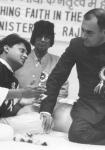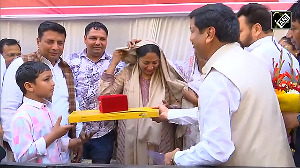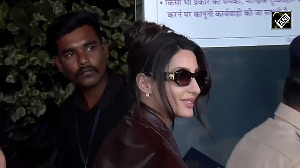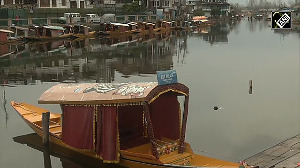India has relaxed its tourist visa rules by lifting restrictions imposed on foreign visitors who want to visit India within a period of 60 days of their earlier visit.
Citizens of Pakistan, China, Iran, Iraq, Bangladesh, Afghanistan, Sudan, people of Pakistani and Bangladeshi origin and "stateless persons" will continue to come under the 60-day rule.
The restriction was imposed in 2009 after the Mumbai terror attack, when it was found that Lashkar-e-Tayiba terrorist David Headley had misused his multiple-entry visa. He had made nine trips to India to prepare footage of 26/11 targets for the Pakistan-based terror group.
The home ministry made it clear that any applicant for an Indian visa, who has any sort of Pakistan lineage, must be referred to Delhi by the Indian missions for prior clearance.
In its November 23 order, the home ministry said, "The provision relating to the two-month gap between two visits of a foreign national to India on a tourist visa has been reviewed by the government. It has now been decided to lift the restriction of two-month gap on re-entry of foreign nationals coming to India".
The move to review the visa restriction was initiated by the Prime Minister's Office in January 2012 after concerns were raised by the tourism ministry that the negative perception following the move had affected flow of tourists.
The PMO had asked the ministries of home and external affairs to review the restrictions, including the possibility of bringing in more countries under the visa-on-arrival scheme and improving conditions at major airports.
Earlier, the US embassy and the British high commission too had approached the MEA and home ministry, asking them to work out a more flexible system based on "best visa practices".
The government had been maintaining that in case there is a need for a visa holder to return within two months of his/her departure from India, then the person can approach the nearest Indian embassy or consulate.
Apart from the Headley episode, the security agencies had also found that many foreign nationals -- quite a few of them of Indian origin -- had been staying in India for years.
A large number of them, sources claimed, were running shops, conducting business and related activities which could not be termed as tourism.
So, the government had argued that it had no choice but to introduce a two-month cooling off period, which would bar these visa holders from returning to India for at least two months after they have left the country.
The latest move is likely to breathe fresh life into the tourism industry and comes just ahead of the peak tourist season. India's share of international tourist arrivals in 2011 was a mere 0.64 per cent.
According to latest data, foreign tourist arrivals this year till October showed a marginal increase of 6.2 per cent compared to last year. Tourist arrivals till October were 52.19 lakh.
With the lifting of the 60-day restriction, foreign tourists will be encouraged to visit India and use it as a hub while visiting south-east Asian and neighbouring countries.








 © 2025
© 2025